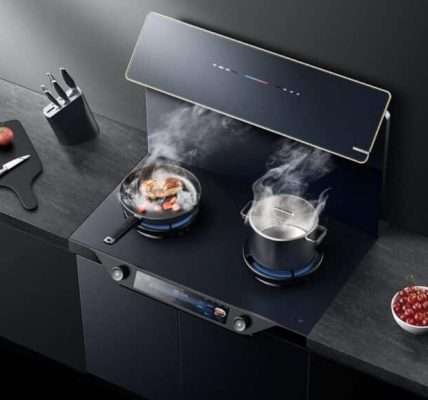The modern kitchen is constantly evolving, embracing innovative materials and designs that seamlessly blend functionality with aesthetics. One such innovation that’s gaining significant traction is the charcoal kitchen sink. These sinks offer a unique visual appeal, stepping away from the traditional stainless steel or porcelain options. The dark, sophisticated hue of a charcoal kitchen sink not only adds a touch of elegance but also provides practical benefits that make it a compelling choice for homeowners looking to upgrade their culinary spaces. With their distinctive look and durable construction, they are sure to make a great addition to any modern kitchen.
The Allure of Charcoal: Aesthetics and Functionality
Beyond its striking appearance, the charcoal color offers several practical advantages. It’s excellent at concealing water spots and minor scratches, maintaining a cleaner look for longer periods. Compared to lighter-colored sinks, charcoal tends to show less wear and tear, making it a low-maintenance option for busy households. The depth of the color also provides a dramatic contrast against lighter countertops, creating a visually stunning focal point in the kitchen.
Material Matters: Choosing the Right Charcoal Sink
Charcoal kitchen sinks are available in a variety of materials, each with its own set of pros and cons:
- Granite Composite: Highly durable, heat-resistant, and scratch-resistant. Often requires sealing to prevent staining.
- Stainless Steel (with Charcoal Coating): Offers the strength of stainless steel with the desired color. The coating’s durability depends on its quality.
- Cast Iron (with Charcoal Enamel): Classic look with excellent heat retention. Can be prone to chipping if not properly cared for.
- Fireclay: Durable and resistant to scratches and stains. Can be heavier and more expensive than other options.
Consider your budget, lifestyle, and desired aesthetic when selecting the material for your charcoal sink. Granite composite is a popular choice due to its balance of durability and affordability.
Design Considerations: Integrating a Charcoal Sink into Your Kitchen
A charcoal sink can be incredibly versatile, complementing a range of kitchen styles. In a minimalist kitchen, it adds a touch of drama and sophistication. Paired with light wood cabinets and white countertops, it creates a striking contrast. In a more industrial setting, it blends seamlessly with stainless steel appliances and concrete accents.
Thinking about the hardware is important. Consider the faucet finish and accessories. Brushed nickel or matte black fixtures often pair beautifully with a charcoal sink, creating a cohesive and modern look. Copper or gold accents can also add a touch of warmth and luxury.
Maintaining the Beauty of Your Charcoal Sink
Proper care is essential to maintaining the pristine appearance of your charcoal kitchen sink. Always refer to the manufacturer’s recommendations for cleaning and maintenance. In general, avoid using abrasive cleaners or harsh chemicals, as these can damage the surface. A mild dish soap and a soft cloth are usually sufficient for everyday cleaning. Regularly rinsing and drying the sink can prevent water spots and mineral buildup.
But what about the cost? Are charcoal sinks significantly more expensive than traditional options? And what about installation? Can a standard plumber handle the installation, or does it require specialized expertise?
Exploring the Practicalities: Installation and Cost
Installation, you see, largely depends on the type of sink you choose. Drop-in sinks are generally easier to install, requiring only a cutout in the countertop. Undermount sinks, on the other hand, often require professional installation to ensure a seamless and watertight fit. So, will you be tackling the installation yourself, or is it best left to the professionals? Are you considering the potential costs of professional installation when comparing different sink models?
Price Point: Is the Upgrade Worth It?
Are charcoal sinks genuinely worth the investment? While some might perceive them as a luxury item, consider the long-term benefits. Are you factoring in the low-maintenance aspect, which can save you time and effort in the long run? And what about the potential increase in your home’s value? Could a stylish and modern kitchen sink contribute to a higher resale price?
- Are you comparing prices across different retailers and brands to find the best deal?
- Have you considered the cost of any necessary accessories, such as a new faucet or strainer?
- Are you budgeting for potential plumbing modifications that might be required during installation?
Beyond the Sink: Completing the Charcoal Aesthetic
A charcoal sink is just one piece of the puzzle. How can you further enhance the kitchen’s design to complement this bold statement? Are you considering charcoal-colored appliances or backsplash tiles? And what about the cabinet hardware? Should you opt for sleek, minimalist pulls or something with a bit more character?
Don’t forget about the lighting. How can you use lighting to accentuate the sink’s unique color and texture? Are you thinking about adding under-cabinet lighting or pendant lights above the sink? And finally, how will this sink complement the color of your plates?
The Future of Kitchen Design: Is Charcoal Here to Stay?
Is the charcoal sink just a fleeting trend, or is it a sign of a more permanent shift in kitchen design? Will it stand the test of time? Are we seeing a growing preference for darker, more sophisticated colors in the kitchen? Only time will tell, but one thing is certain: the charcoal kitchen sink offers a compelling alternative to traditional options, and it’s worth considering if you’re looking to add a touch of modern elegance to your home. But will it be the right choice for your individual style and needs?

